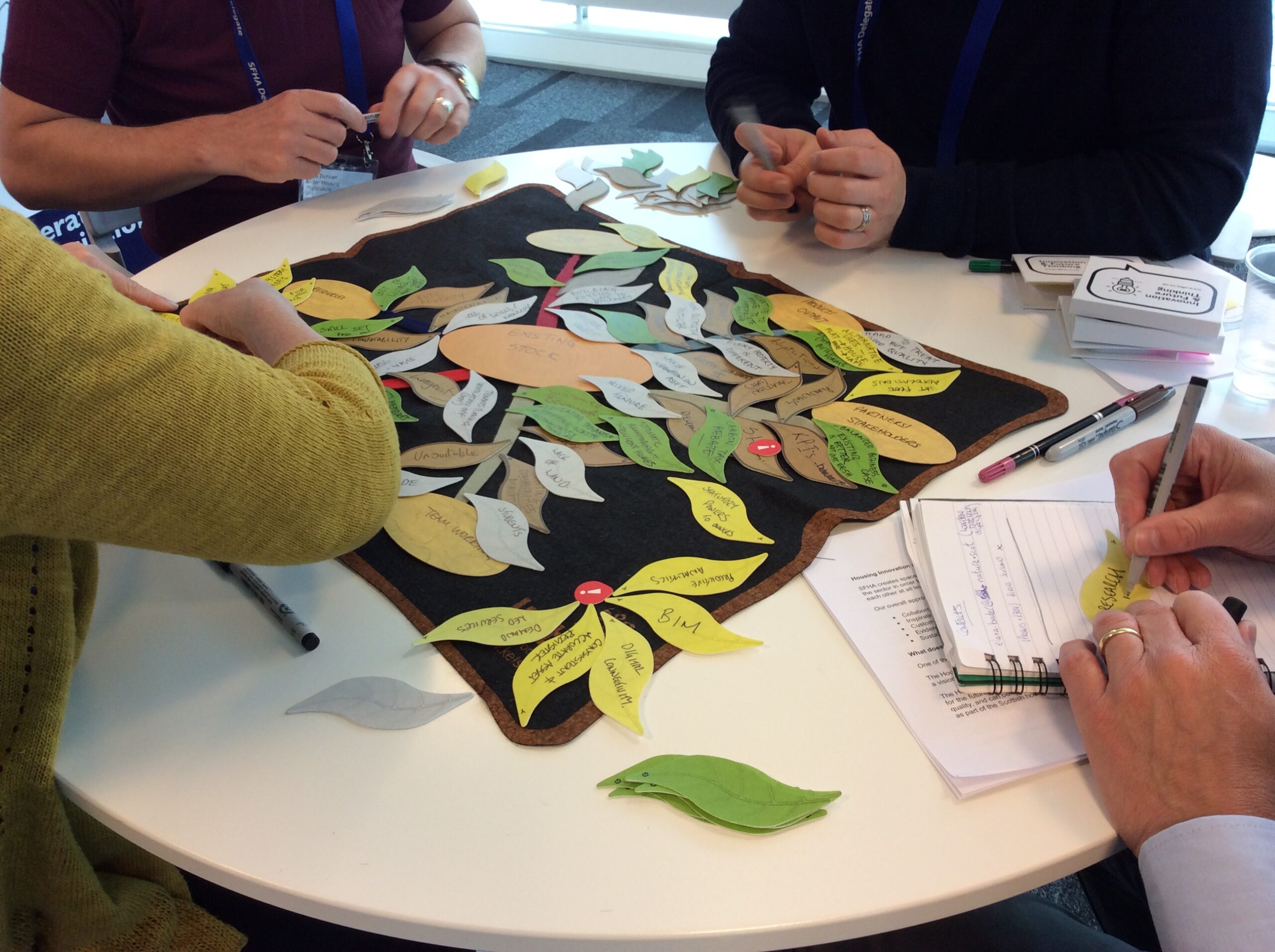Once at work we cease to ‘play’. Homo Ludens first published in 1944 in which Johan Huizinga defines play:
‘It proceeds within its own proper boundaries of time and space according to fixed rules and in an orderly manner.’
Play does have intrinsic rules – how often do you hear a small child complaining about their pal who didn’t play by the rules? These rules are often co-created – you cannot build a fort with leaves or shoot your team mates for example. An argument ensures and small children often build a consensus to change or accept that rule.
Innovation tools and techniques can re-encourage that mind set, providing space, authority and skills to apply ‘play’ to an organisational criterion.
However, it is still difficult for organisations and business, in this current economy, to see the real value in growing their people creatively when other targets take precedence.
So how do you marry the creative and pragmatic approach to drive real value for organisations?
One of the methodologies I have come across recently is Mark Browns’ total innovation management framework of the Dolphin Index.
Here he talks about the ambidextrousness of companies that succeed and the need to marry both development streams.
http://www.dolphinindex.org/
I am always looking to discover new ways to marry these two requirements in the programmes I develop. Play to innovate, whether as an individual or as an organisation, can only build long term viable and desirable value for any organisation wishing to think for their future.
How do you do it – how do apply creativity in people to pragmatic outcomes in a quantifiable methodology?
In a recent conversation with Lucy Gower of Lucidity https://www.lucidity.org.uk/ we discuss how bringing ‘play’ back into the workforce has the potential to unlock the creative thinking of its people to generate better outcomes for their customers.
